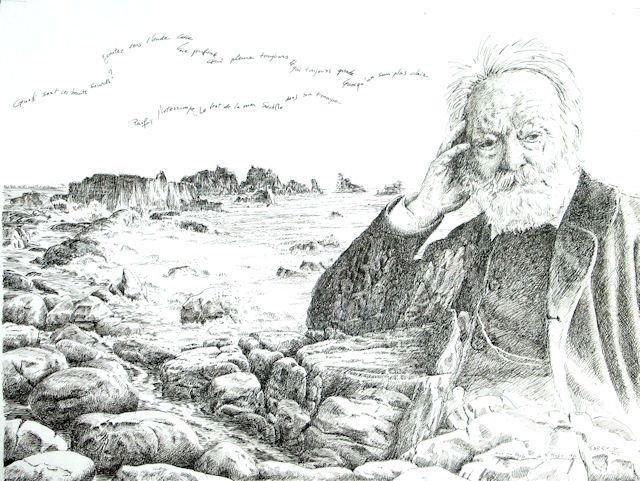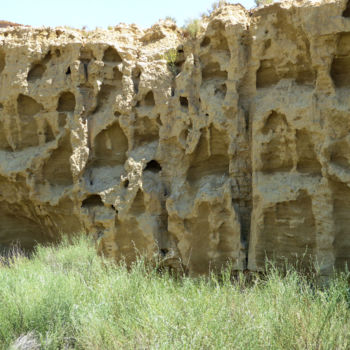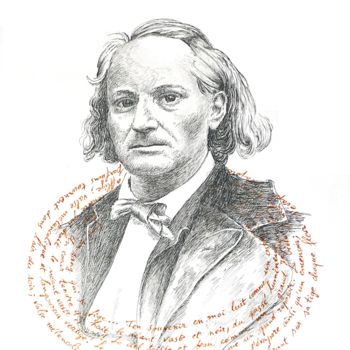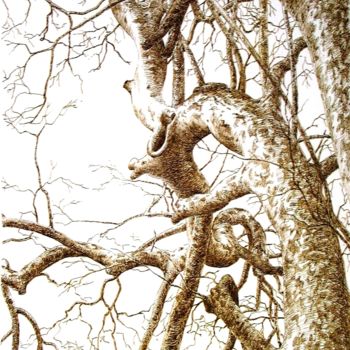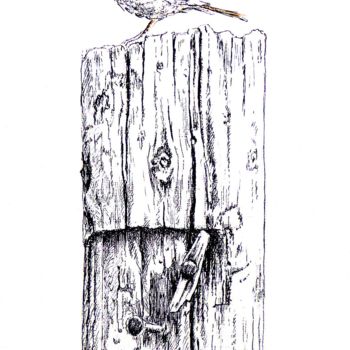Le fantôme de Victor H. (2011) Drawing by Pierre Fabry
Sold by Pierre Fabry
-
Original Artwork
Drawing,
Other
- Dimensions Height 15in, Width 19.7in
Related themes
Pierre Fabry is an artist born in 1943 in Saint Chamond, in the Loire. After secondary studies at the Lycée Technique Claude Lebois in Saint Chamond, he obtained his technical baccalaureate before moving to Grenoble in 1962 to pursue higher studies at the Faculty of Sciences of Grenoble.
His academic career led him to become a professor at Joseph Fourier University, specializing in Chemistry-Physics with particular expertise in the field of sensors. He has co-written several works in the field of Physical Chemistry, published notably by Dunod, EDP Grenoble Sciences, Ellipses, Lavoisier and Springer. Based in Meylan, in Isère, since 1984, he is married and has two children. In 2006, he retired from his academic career.
Pierre's passion for drawing took root in his childhood, although he does not remember the exact moment when this passion emerged. He perhaps attributes this taste to his learning of industrial design, where he developed a love for Indian ink lines and a concern for precise and careful work. He dedicated himself to transforming sheets of white paper into images, always seeking to push the limits of his skills and take on artistic challenges. Many of his drawings explore the material, highlighting the alterations undergone by wood and stone over time, thus paying homage to the past and the cyclicality of life.
Pierre Fabry was initially self-taught in visual arts, experimenting with oil painting in the 60s and 70s, then watercolor during his training for adults at the École Supérieure des Arts de Grenoble in the 90s. He also created illustrations, notably posters and cartoons, and has participated voluntarily in association and union activities since the 60s and 70s. However, his true passion lies in the practice of pen drawing, which he has practiced for over 60 years, alongside a successful academic career.
Pierre Fabry worked alone for a long time before joining APAM (Association of Artists in Meylan) in 2006, where he discovered an environment conducive to sharing artistic knowledge in a friendly atmosphere. He also had the opportunity to pass on his know-how through pen drawing workshops. During his artistic career, he has had a dozen personal exhibitions, presenting between 20 and 40 works each time, as well as half a dozen group exhibitions. He also participated in numerous one-off and outsourced group actions, as well as around twenty artistic fairs, mainly in the Rhône-Alpes region, where he won a dozen distinctions in drawing, including gold medals, money and first prizes, among others.
-
Nationality:
FRANCE

- Date of birth : 1943
- Artistic domains:
- Groups: Contemporary French Artists

